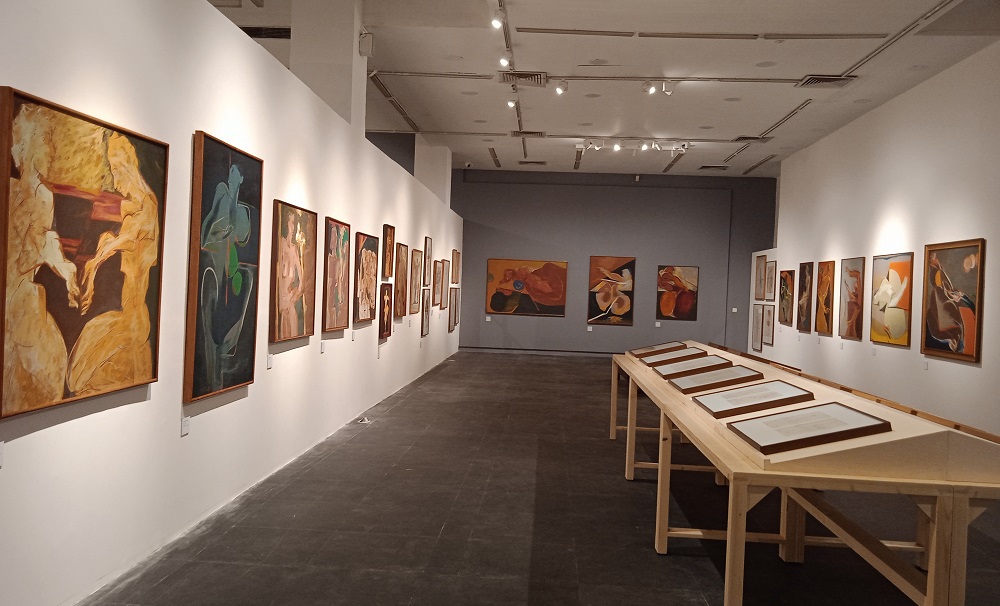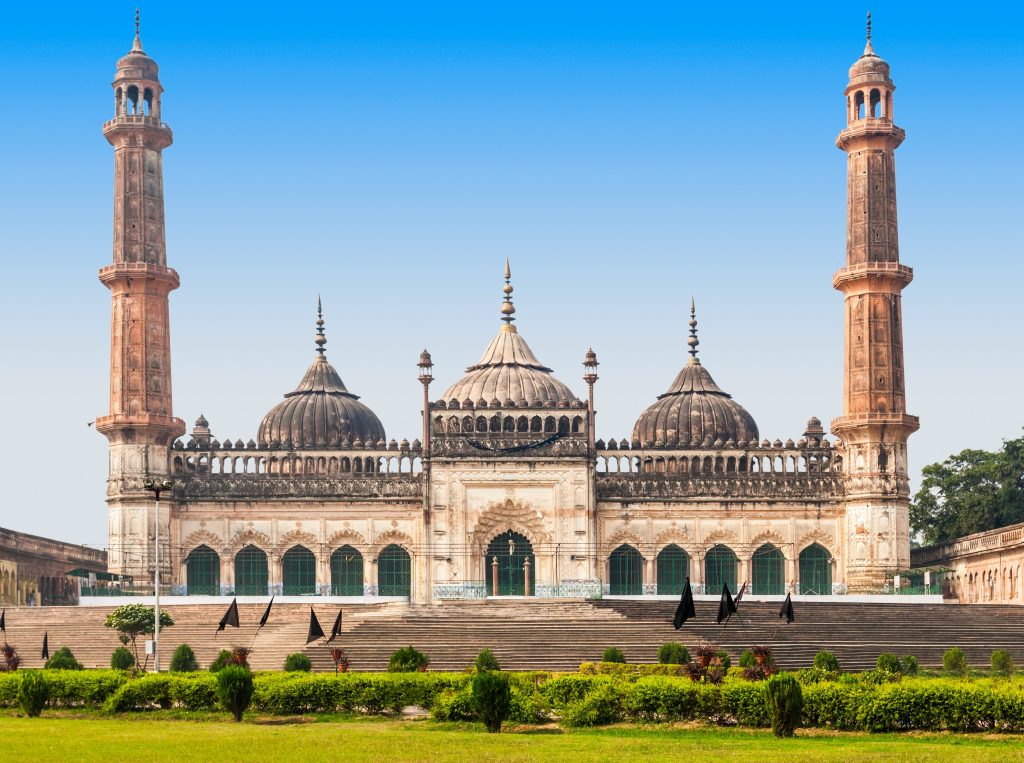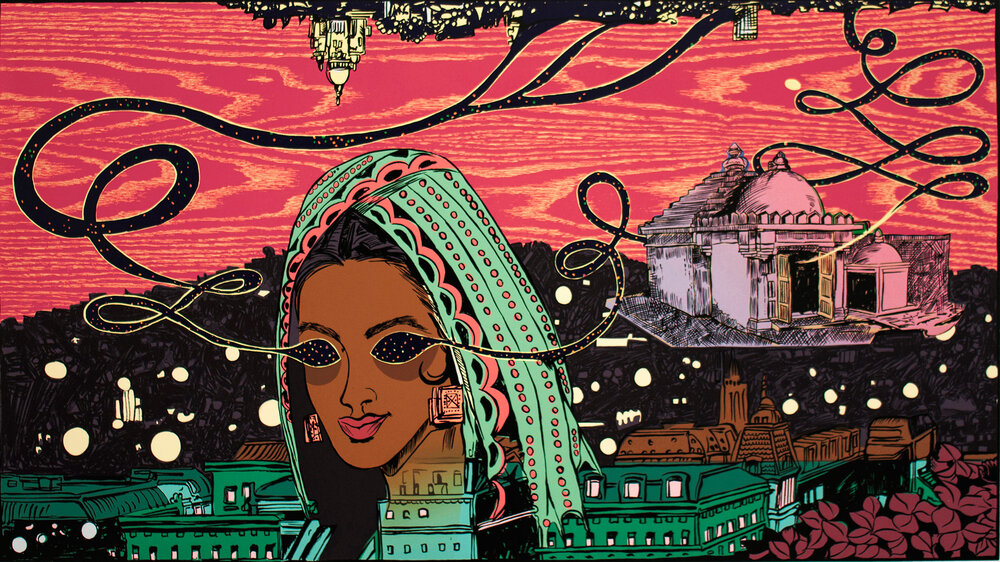‘Jatin Das is a bearded and wiry man who, when I meet him, always seems in a state of excitement over trivial as well as what art critics call “intense” perceptions of the world we both breathe, the world in which his arm whirls, not hurling but placing colours on the canvas before him. As the endless inches of paper which the writer, a snail, crawls across are the compass of the writer’s life, the continuous yards of canvas at which the painter brandishes his brush are the compass of the painter’s life. Jatin Das is determined not to allow an inch of his life or his perceptions during it to escape the delicate turn of his brush’, an Indian writer and poet Dom Moraes wrote on artist Jatin Das a long before.
Artists Jatin Das and poet Dom Moraes are the most celebrated friends for a long Indian art-literature-cultural space; they gathered to discuss art and poetry and travel to Sweden as guests. Jatin Das is a renowned artist and poet-published poetry collection, founder of the Bombay Poetry Group and co-editor of the poetry magazine The Blunt, he has exhibited his artwork worldwide for the last six decades.
Many stories and myths are going around Jatin Das’s artistic life, which is displayed in a retrospective show that opens in the National Gallery of Modern Art, titled ‘Jatin Das – A Retrospective: 1963-2023’, presenting a glimpse into the artist body of work that encloses a lifetime of paintings on canvas and paper, drawings in conte and ink, oil, and watercolours.
It is challenging to cover a retrospective show entirely in a day or even two that harbours more than 400 works from different mediums and six decades of periods. “My paintings are not narrative,” the artist observes, “They are poetic, provocative, and metaphorical: human suffering, love, and tenderness. All of it is conveyed by these vibrant, naked figures that transcend time and location”, these preludes making his paintings and display of his paintings are easier to approach.
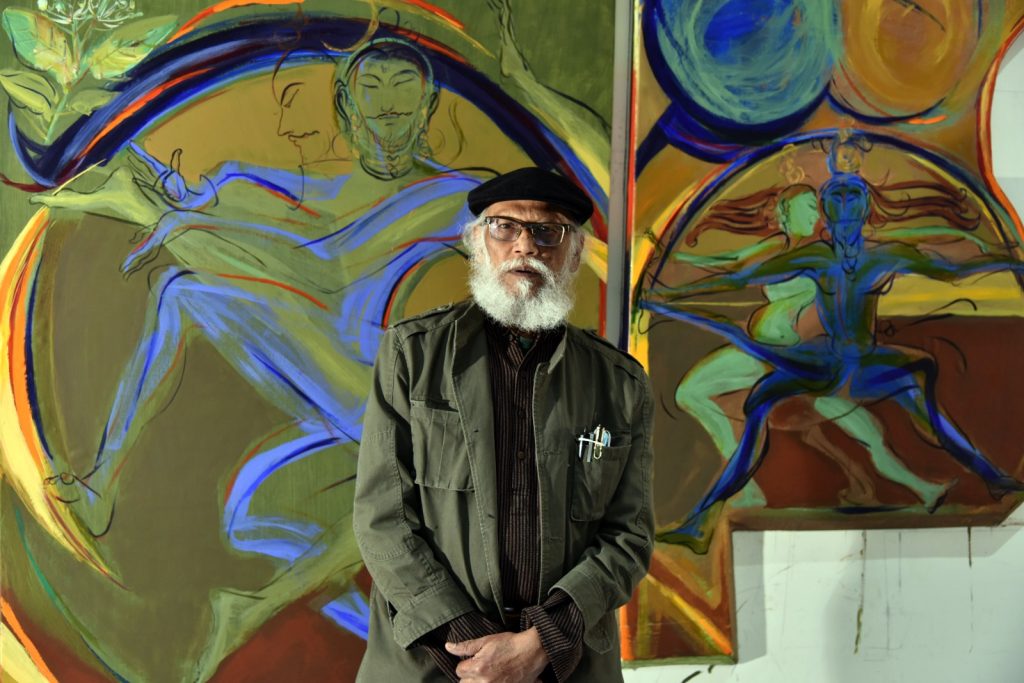
We can go through his artwork in a historical air. The story of the artist starts from the princely state of Mayurbhanj in Odisha and his journey to J J School of Art, Bombay life, then Delhi, floating around the world with friends and alone. We tend to be aware, as Shobita Punja wrote, “A loner with his ideas, Jatin has never aligned himself with any group. He has always been headstrong and pursued whatever he wished, living by his convictions and taking responsibility for his actions.
In the 1950s, at JJ School of Art, Jain Das joined architecture and switched to painting within six months; he always claimed and adored the presence of the mentors and celebrated his submission of 300 sketches a day. He sketched vegetable vendors, hawkers, coolies, and anything and everything he saw and spent his time with architects, writers, poets, musicians, dancers and actors. “It was a vibrant time, and I miss those Bombay days, Jatin Das always said.
The vivid colours, strong lines, and characters that convey the unadulterated emotion of everything human in Jatin Das’s artworks throughout the past six decades make them a sight to behold for the audience when we are in front of them.
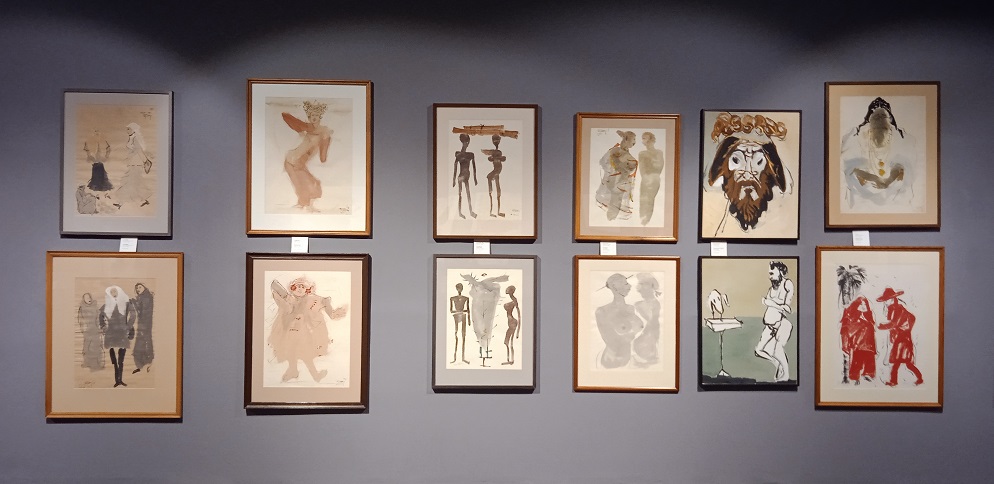
What brings a retrospective show to current discourse or as a visual conceit of time? A gang of artwork should drive us more delighted than before, right? Jatin Das’s visual concert babied us with slight feathers that come from the strange land of imaginative practice or even pictorial fiction, or even as the artist notes, “When I look at an empty canvas or a bare sheet of paper, I feel I am starting to paint or draw for the first time. As I begin, there is an intimacy, a purity. When the work finishes, I become an outsider, a viewer. It stands on its merit and strength or goes into the bin’. We should understand one thing about these artists’ statements: the artwork displayed in the NGMA show has survived the artists’ intense grading.
The astonishing thing about the show is bringing the people and their abstract physiques into a visual rhythm. We see the people and their bodies in their translated actions, bodies that move in a space like coloured translucent things; their bones and flush fade from their bodies and disappear to smoothly aired canvases; they are, as Dom Moraes wrote, “The action of his paintings seems to take place outside the canvas. It is as though the figures were poised on parachutes, about to descend — or, if possible, ascend — and leave the rest of the canvas to its significance”.
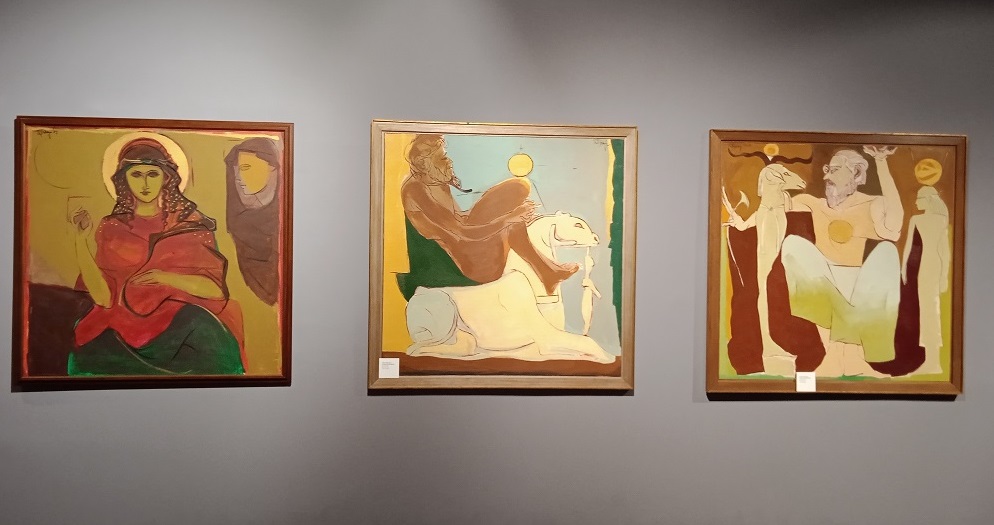
Jatin Das’s concerns were always about the human body, human behaviour, nudity, most profound emotions, anguish, and worries, as well as about man’s entire life in nature, his immediate surroundings, and his need to connect with the magical. That made him desire to produce works around the human body and the rhythmic pattern of the human body suspended in the air. Once, the artist wrote, “In the last ten years, two figures have periodically emerged unintentionally. Recently, I became conscious of it as a series. I have become increasingly concerned about human relationships”. This retrospective show offers a glimpse of all his philosophy and the beauty of his practice, how the artist looks into the people and the surroundings, and how those things are portrayed in his artworks.
The artist’s initial remarks regarding his process demonstrate the rhythmic body motions; he painted while watching dance and went to a dance performance with a sketchbook in hand, and as he claimed, ”the main thing is understanding the “Brahma Rekha” – the key line—the rhythmic structure of the key line in everybody’s movements”. The Brahma Rekha is abstract, and no one readily locates this in his paintings.
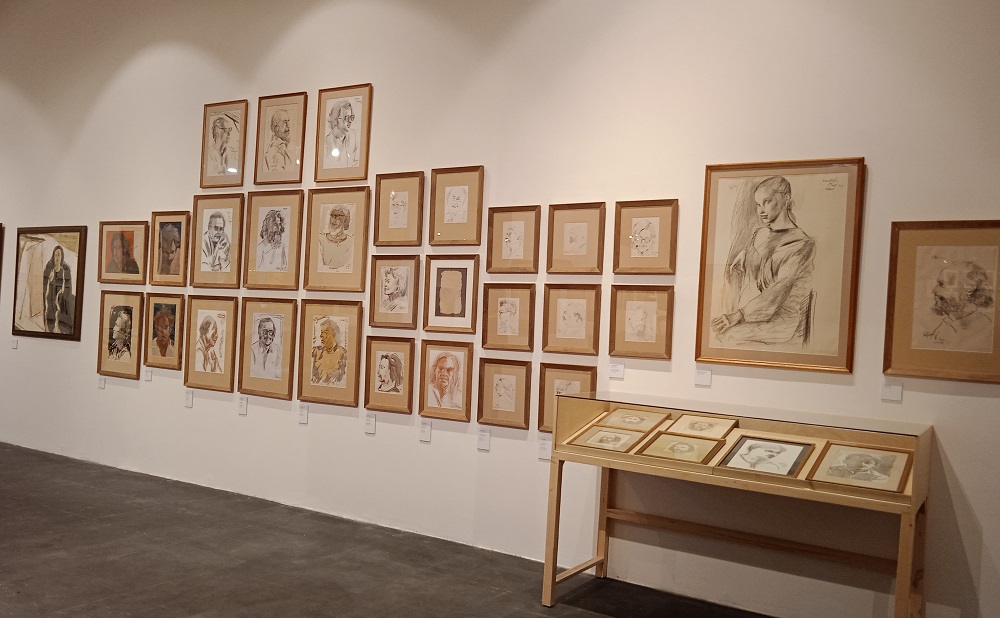
This show brings the paintings and other artwork in decades, from the 1960s to the 2020s. Artists’ early works, like students’ paintings, we get an idea of where the artist’s journey of catch line as a musical note starts and the human body’s extremities as fingers and toes. Artists stand both in traditional and contemporary to embody the spirit of the body and nature, devoid of embellishments and any reference to time and space. For us, and maybe artists too, ‘they are energised bare figures. Different sizes on different textures of paper create a line’s peculiarities.
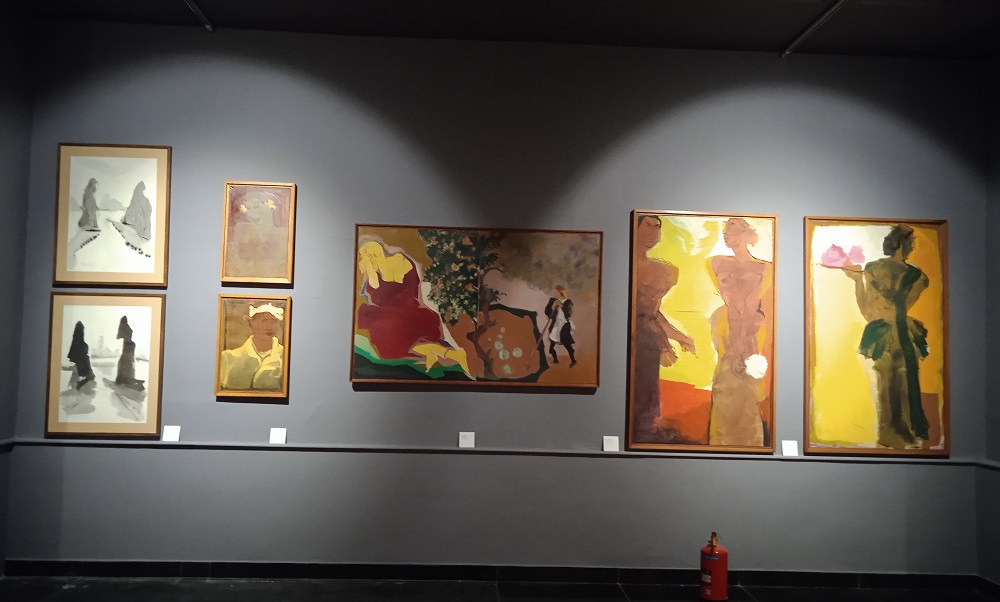
Jatin Das always reasoned about the mediums he engaged in at different times and spaces, like oil and acrylic paintings, sculptures, murals, graphics, painted on platters, and even made pinch toys. We located works from all his past shows in this retrospective show: works from Earth Bodies, A Journey across Different Lands, Exodus 2020, Prakruti Purush, Portraits: Artists and Friends and representation of his iconic murals and other areas of works.
We know Jatin Das is a poet, and we can see that he is the craziest guy alive from his vivid and forceful brushstrokes, translating into poetry on canvas. The shown artwork does not yet explore where one line meets another, and when they begin to flow together, demand another, and become a fusion of connection. Jatin Das’ figurative work is lost in abstraction and meets the realities of a statuette of stillness in movements.
India’s Rich Art Heritage on Display in Oman’s National Museum

Krispin Joseph PX, a poet and journalist, completed an MFA in art history and visual studies at the University of Hyderabad.

